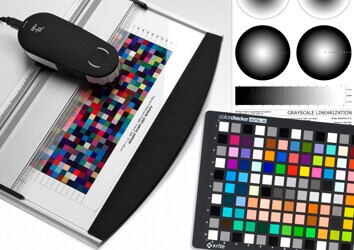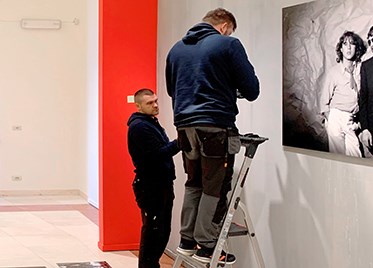Why do Photos Discolour...?
Simulation of a color photo discolored under the Influence of Light (Ultraviolet rays).

What is Lightfastness?
Lightfastness is the property of a dye that indicates the extent to which the dye is influenced by light (ultraviolet rays).
Some dyes undergo a chemical change under the influence of light that makes the colors lighter.
Photo prints and their Lightfastness
Most photos, such as those developed in chemical baths, fade after a few years. On this page we try to explain in a simple way why some prints discolor and how to prevent this. Dyes that do not discolor are called "Lightfast".
There are several reasons why photos fade
Influence of UV rays
Under the influence of the UV rays present in light.
The more sun, the brighter the light, the more UV radiation. The human eye cannot see UV light. Certain lighting also contains a portion of UV rays.
Temperature and Humidity
Temperature and humidity have a major influence on lightfastness. The higher the temperature and humidity, the faster the photos will fade and the paper will yellow.
The Production Method of the Photos
- A chemical development usually does not guarantee a long storage time. The reason is that the pigments created during development are not lightfast.
- Have the photos been rinsed enough after development or are there any chemical residues left in the photographic paper ? These residues influence the color pigments.
- Photos produced with inkjet do not suffer from the above chemical reactions, but here too there are significant differences: See facing: "The paper used."
The Paper used affects the Lightfastness
Some photo papers start to degrade and yellow over time.
Usually the ‘whiteners’ or ‘acids’ contained in the paper are to blame. Whiteners are frequently used to give the paper a perfect white appearance.
These whiteners yellow over time. The whitening effect breaks down slowly – usually after one-and-a-half to two years already.
The breakdown also happens in complete darkness.
ISO standard 9706 = 200 years of Lightfastness
As a result, an ISO standard was established out of necessity (ISO 9706).
This contains specifications to which photos must conform that can be used for at least 200 years under normal everyday conditions.
This norm is considered today by most museums and galleries as the standard.
The logo is the Infinite symbol in a blue circle, accompanied by the ISO 9706 identifier.
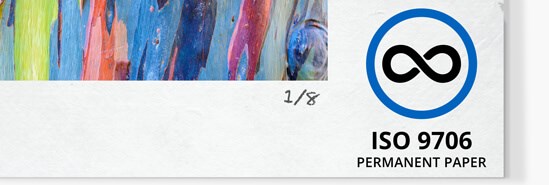
Fine Art Inkjet Papers from Hahnemühle and Canson with ISO 9706 standard
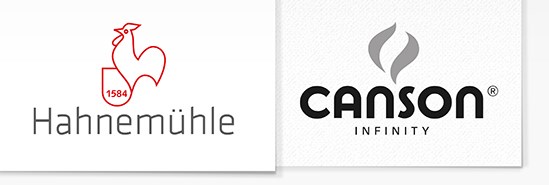
In addition to ordinary photographic papers, producers of quality Photo Papers such as Hahnemühle and Canson sell a range of artistic Fine Art papers that meet the ISO 9706 standard.
Authentic produces an extensive range with these papers. You can find them in ‘Diasec A la Carte’ and Photo Prints.
Elsewhere on this site they are designated by the ISO 9706 logo.
Solution: Epson ISO 9706 Inks and Printers
Epson is a manufacturer of printers with associated inks that both comply with ISO standard 9706.
You should therefore not only use ISO 9706 papers, you should also have ISO 9706 inks and printers.
AuthenticPhoto uses such ISO 9706 Inks and Printers.
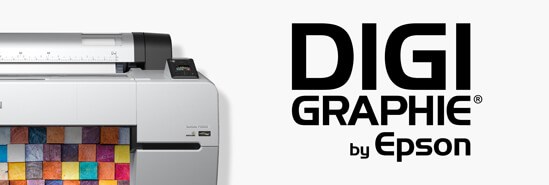
Diasec finishing in accordance with the ISO 9706 standard
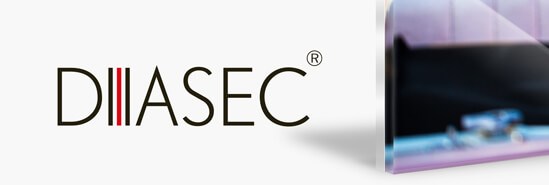
Once the photo has been produced on ISO 9706 paper, it must also be finished to the same standard.
Diasec is the ideal adhesive product for the ISO 9706 standard. That is why Diasec is adopted as an ISO 9706 standard by world-famous image artists, museums and art galleries.
For gluing and presentation, do not use any products that contradict the ISO 9706 standard. Mounting photos with an adhesive that does not respect the ISO 9706 standard, for example.
Verification and Certification of ISO 9706 standard
We would just like to mention two companies that check and confirm that the products produced comply with the ISO 9706 standard.
On our website, and on our certificates, we refer to these companies if they have tested a product used by us.
Testing takes place in an accelerated environment: that is to say a hundred years can be simulated in a few months.
Each time we present print products on this website that have been tested by a test centre, we mention this with a reference on the certificate.
Wilhelm-research.com (USA)
Since 1978, Henri Wilhelm, the founder, has devoted himself exclusively to research into image stability. In his lab, manufacturers of printers, inks and papers are tested for the durability of their products. Manufacturers may mention the results obtained in their quality certificates.
www.wilhelm-research.com
LNE Paris
LNE is a more general research centre in Paris that, among other things, also examines the lightfastness of photographic products and issues certificates. www.LNE.fr






